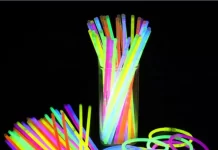Immerse yourself in the enchanting world of wine-making with a winery tour that promises an unforgettable journey. Uncork the Experience and expect to be whisked away into lush vineyards, where every grape narrates a story of patience, passion, and perfection. Let your senses dance to the rhythm of the vine-to-wine process, as you savor the intoxicating aroma of fermenting grapes and the rich flavors of meticulously crafted wines. With every step, anticipate a captivating blend of learning, tasting, and connecting with like-minded wine enthusiasts. Whether you’re a seasoned connoisseur or a curious novice, a winery tour unwraps the art and science of winemaking in the most delightful way. So, ready to uncork the experience? SECTION 1: What to expect on a winery tour In the heart of the vineyard, a winery tour is an immersive journey where you can witness the transformation of a humble grape into a bottle of exquisite wine. Expect to delve into the history of wines, the viticulture, and the unique winemaking techniques adopted by the winery. A typical tour includes a detailed walkthrough of the vineyards, fermentation cellars, barrel rooms, and sometimes even the bottling process. Each step unfolds a new chapter in the life of a wine, revealing the meticulous care and precision that goes into its creation.
A winery tour is not just for the wine aficionado but also the curious traveler seeking a novel experience. It is a chance to understand the terroir – the combined effects of soil, climate, and sunlight that give a wine its unique character. You will learn about the different grape varieties, their growth cycles, and the impact of weather patterns on the harvest. As you delve deeper into the vineyards, expect to be enchanted by the beautiful landscape, the rows of vines heavy with ripening grapes, and the serene ambiance that whispers tales of nature and nurture.
Besides the knowledge part, winery tours are also about tasting and appreciating the finesse of wines. From light and crisp whites to full-bodied reds, you get to taste a spectrum of wines and learn how to discern their subtle nuances. You will learn the art of wine tasting – observing color, swirling the wine, sniffing the aroma, and finally tasting it. The experience goes beyond the palate, engaging all your senses in a symphony of flavors and aromas. It’s an opportunity to refine your palate, develop your wine vocabulary, and discover your wine preferences.
SECTION 2: How to prepare for a winery tour Preparation is key to making the most out of your winery tour. Start by researching the winery you plan to visit. Familiarize yourself with the types of wines they produce, their history, and the unique attributes of their vineyards. This will give you a sense of what to expect and help you ask insightful questions during the tour.
Dress for the occasion – comfortable yet classy is the way to go. Keep in mind that you will be walking through vineyards, sometimes on uneven terrain, so choose your footwear wisely. Dress in layers as temperatures can vary between the vineyards and the wine cellars. Don’t forget your sunhat, sunglasses, and sunscreen if you are going on a summer tour.
On the day of the tour, have a hearty breakfast. Wine tasting on an empty stomach can lead to faster intoxication. Stay hydrated and spit out the wine if you feel it’s getting too much. Despite the temptation, avoid wearing perfumes or colognes as they can interfere with the detection of wine aromas. Remember, the goal is not to drink as much as you can, but to learn and appreciate the nuances of different wines.
SECTION 3: A look at the wine-making process A winery tour gives you a front-row seat to the winemaking process – a blend of science, art, and tradition. It starts in the vineyard, where the quality of the grapes determines the quality of the final product. You will learn about the vine cycle, pruning methods, and the importance of the right harvesting time.
Once the grapes are harvested, they are sorted and crushed to extract the juice, which is then fermented. During fermentation, yeast converts the sugars in the juice into alcohol and carbon dioxide. You will see the fermentation tanks, learn about different fermentation methods, and maybe even get a chance to taste the fermenting juice at different stages.
Post-fermentation, the wine is aged in barrels or tanks to enhance its flavors and complexities. The choice of barrel, the duration of aging, and the cellar conditions contribute significantly to the final taste of the wine. Finally, the wine is clarified, bottled, and labeled – each step a testament to the winemaker’s dedication and skill.
SECTION 4: Wine tasting: A sensory experience Wine tasting is an essential part of the winery tour. It is a sensory experience where you use your eyes, nose, and palate to evaluate the wine’s quality and character. You will learn to swirl the wine to release its aromas, sniff to identify different scent notes, sip to taste its flavors, and savor to judge its finish.
Wine tasting is also about learning the vocabulary of wine – words like tannins, acidity, body, and bouquet. You will learn to distinguish between different grape varietals and wine styles, understand the impact of aging, and identify faults in wine. It’s an opportunity to refine your palate and develop your personal preferences.
Remember, wine tasting is subjective. While there are general guidelines on what constitutes a good wine, the best wine is the one that you enjoy. So, while you listen to the experts and learn from them, trust your taste buds and enjoy the experience.
SECTION 5: Understanding wine labels and varieties A wine label is a treasure trove of information. During a winery tour, you will get a chance to understand the details hidden in those small prints. From the type of grape varietal and the region of origin to the alcohol content and the year of production, every detail on the label tells a story about the wine inside the bottle.
Understanding different wine varieties is also part of the learning experience. Whether it’s the light and fruity Pinot Noir, the full-bodied Cabernet Sauvignon, the crisp Chardonnay, or the sweet Moscato – each grape varietal produces a distinct style of wine. Understanding these differences will help you appreciate the diversity of wines and guide your wine selection in the future.
SECTION 6: Vineyard exploration: From grape to glass Exploring the vineyard is a highlight of a winery tour. It’s where you can see the grapes on the vine, feel the soil, and understand the terroir that shapes the wine’s character. As you walk through the rows of vines, you will learn about the lifecycle of a grapevine, the grape varieties grown in the vineyard, and the viticulture practices followed.
The vineyard exploration often includes a demonstration of grape harvesting, pruning, or trellising, depending on the season. It is a hands-on experience that brings you closer to nature and the art of winemaking. It’s a chance to appreciate the patience and hard work that goes into every bottle of wine, from grape to glass.
SECTION 7: Meeting the winemakers Meeting the winemakers is one of the most rewarding parts of a winery tour. They are the artists behind the wine – their vision, expertise, and passion shape the character of the wine. Talking to them gives you insights into the winemaking process, the challenges, and the rewards.
Winemakers often share interesting anecdotes, their philosophy of winemaking, and their commitment to sustainability and nature. Their stories add a personal touch to the wine and deepen your appreciation for it. So, whether you are a wine connoisseur or a casual wine lover, don’t miss the opportunity to interact with the winemakers.
SECTION 8: Tips for a successful winery tour To ensure a successful winery tour, plan your visit during the off-peak hours or weekdays when the wineries are less crowded. This will give you a more personalized experience and a chance to interact with the staff. Also, try to limit your visit to 2-3 wineries a day to avoid rushing and truly enjoy each experience.
While at the winery, respect the space and follow the guidelines. Remember, a winery is a working farm, and certain areas might be off-limits for safety reasons. Show appreciation for the wines even if they are not to your taste. And most importantly, don’t forget to buy a bottle or two of your favorite wine as a souvenir of your visit.
SECTION 9: The best winery tours around the world There are countless remarkable wineries around the world, each with its unique charm. From the rolling hills of Tuscany and the sun-drenched vineyards of Napa Valley to the scenic wineries of New Zealand and the historic chateaus of Bordeaux – the options are endless. Depending on your taste and preference, choose a winery tour that offers a blend of great wines, beautiful scenery, and rich history.
Some of the world’s best winery tours include the Castello di Amorosa in Napa Valley, Antinori nel Chianti Classico in Tuscany, and Chateau Smith Haut Lafitte in Bordeaux. These tours offer a comprehensive wine experience – from vineyard exploration and wine tasting to meeting the winemakers and enjoying gourmet meals paired with their finest wines. Charlottesville wine tours on the east coast of the United States are increasingly popular as another American option.
SECTION 10: Conclusion A winery tour is much more than a day trip. It’s a sensory journey that uncorks the experience of winemaking in its most authentic form. It’s about immersing yourself in the world of wines, learning their stories, and appreciating the artistry that goes into every bottle. Whether you are a seasoned wine lover or a curious explorer, a winery tour promises an enriching and unforgettable experience. So, go ahead, uncork the experience, and let the world of wines enchant you.












